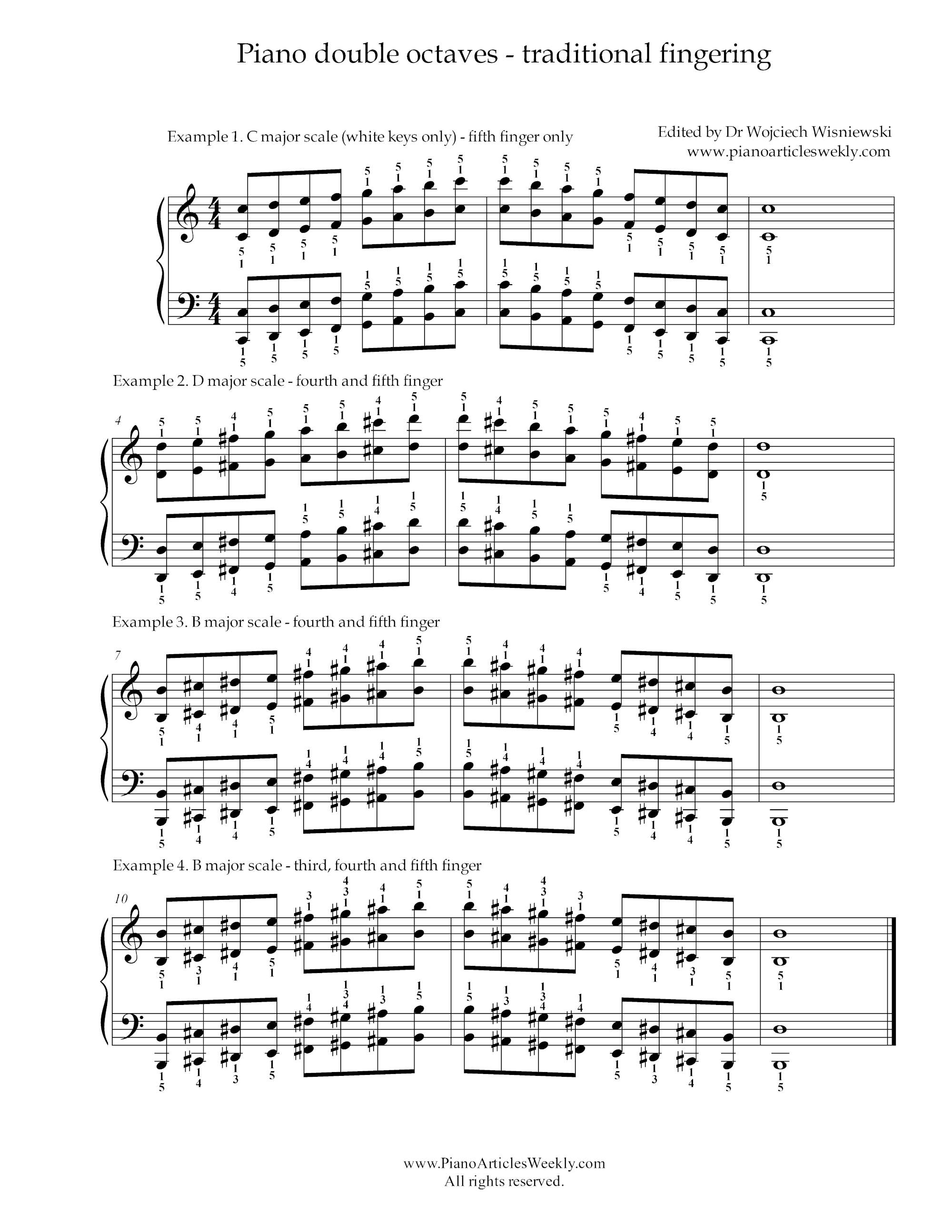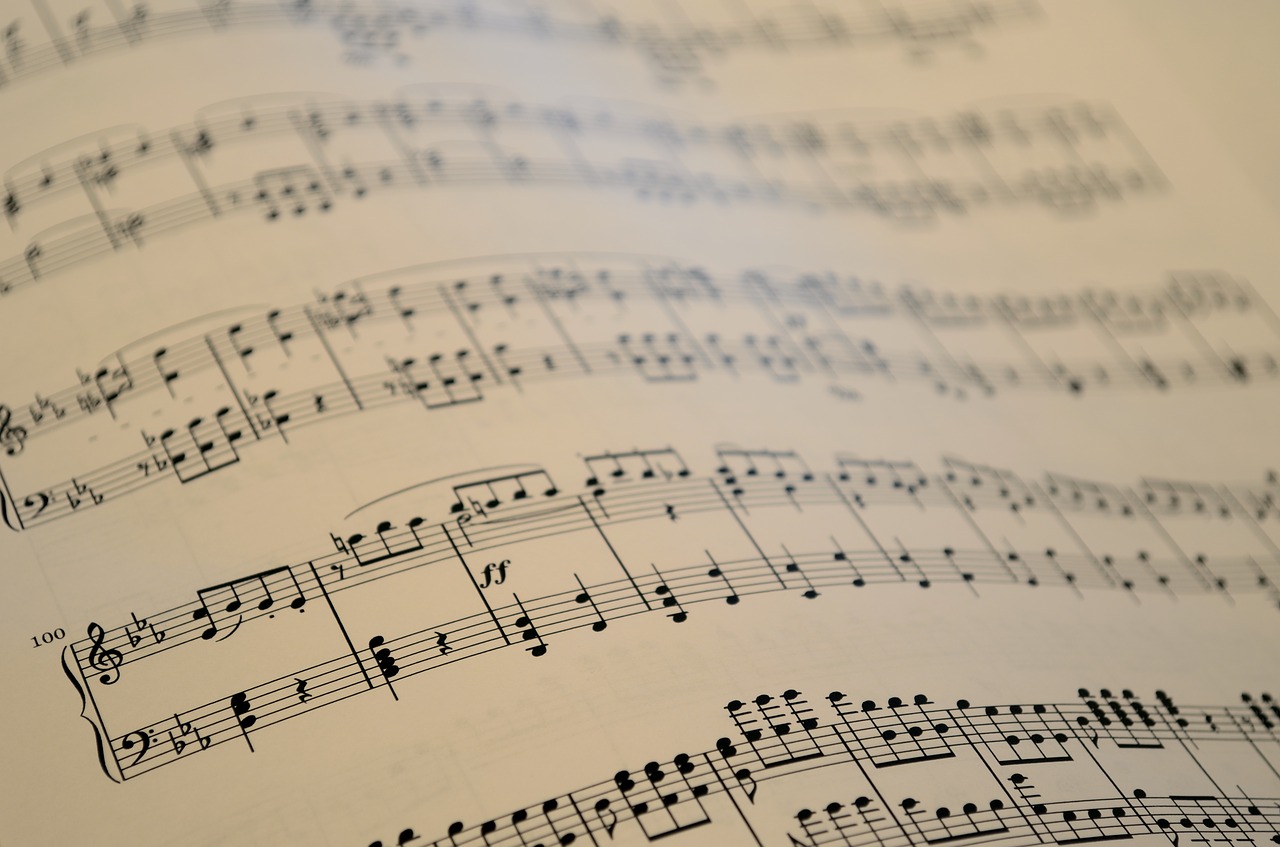Piano technique
Piano double octaves – find the best fingering for your hand type
In today’s article, I would like to discuss the traditional fingering for double octaves in piano: using a fourth and fifth finger – and occasionally the third. After many years of practice, I found that for my hands (which are not small), octaves performed with the fifth finger only – on all keys – are the best option.
Traditional fingering
The traditional fingering practice suggests that piano octaves performed on white keys should be executed with the fifth finger while the third and fourth should be used on black keys. Please see the examples of such fingering on the score below:

Example 1 above shows the fingering style for double octaves using the fifth finger only. For small hands, this fingering applies to scales in all keys. Examples 2 and 3 show various options for using the fourth finger. The two versions of octaves performed using the third finger are shown in Example 4.
My octave technique
My hand can stretch up to an interval of the eleventh (one octave plus fourth, for example, notes c to f). I can easily take an octave. I was always taught and played octaves using the fingering described above – using the third and fourth fingers on some of the black keys and the fifth on white.
Unfortunately, despite countless hours of practice of some of the most advanced pieces (e.g., Liszt’s Sixth Hungarian Rhapsody and Sonata in B minor), octaves have never felt comfortable to me even though I was able to execute them in a decent tempo and with a good variety of dynamics.
I was never satisfied with the sound of my octaves either. When moving from black to white keys, my hands always shuffled in and out of the keyboard, causing an uneven tone. This was still a problem despite the time I spent adjusting my octave positioning (white and black keys position being closer to each other). I could never have the same level of freedom in octaves with the third or fourth finger, as it was easy to achieve with the fifth.
I was under the impression that my hands are not gifted enough for octaves and that this is how it will remain for the rest of my life.
An experiment with fifth-finger-only octaves
Due to one of my younger students having trouble with playing octaves comfortably, I had decided to learn the piece she was struggling with, so I can help her better. I have learned the score with the fingering used by the student – she was using only the fifth finger due to the small hand size.
To my surprise, using this fingering felt much more comfortable, and the speed and dynamics came a lot easier to my hands than the fingering I have used for years.
I have followed this up by working on many octave sections from the pieces I have learned in the past – using this ‘new’ fingering. Despite being new to me, I have realised that this approach to piano octaves gave me much more comfortable and faster octaves for comparably minimal effort.
Which fingering to use?
When selecting double-octave fingering for your particular hand type, please consider the comfort and evenness of sound.
If you notice that playing double octaves with the third or fourth finger, dramatically changes your hand position and negatively impacts the quality of sound (creating unwanted accents), try to adjust your hand position so that it remains consistent between the fifth and other fingers. Observe how the level of comfort and freedom varies between different fingering styles.
Select the fingering style which assures a good level of comfort and freedom, an even quality of sound and reliable accuracy.
You can also vary the double octaves fingering depending on the repertoire. In slower sections, where less stamina and softer sound are required, you might be able to use less comfortable fingering, particularly if legato articulation is needed.
In sections requiring many measures of double octaves written with no breaks, particularly in fortissimo dynamics, I choose the most comfortable fingering style for my hand size – using the fifth finger only.
Conclusions
I have written this article to explain that even though the long-standing tradition of fingering of double octaves, despite its popularity, can be adjusted depending on the hand size.
I would also like to stress that a large hand span is not the only indication of which fingering style should be used, even though the third and fourth fingers are available on octaves performed by that hand size.
In my case, the speed and freedom I have gained from using the fifth finger only, far outweigh the advantages of strength and positioning speed resulting from using the third and fourth finger.
